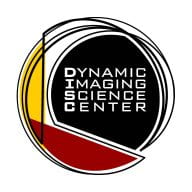
Ye Tian, PhD 
Parveen Garg, MD 
Krishna Nayak, PhD
This collaboration began with a shared interest in improving the assessment of heart disease, which is the leading cause of death and disability in the Unites State, using new low-field MRI technology. Starting with myocardial perfusion imaging.
Myocardial perfusion is a measure of how blood flows to the heart muscle. This is extremely important to the management of heart disease, because blood flow to the heart is critical to delivering oxygen and nutrients to the muscle and removing waste products. The team’s goal is to utilize the novel 0.55 Tesla MRI platform at DISC to make myocardial perfusion measurements that have better definition and will be able to reliably identify sub-endocardial perfusion defects, which has never been done before. Subendocardial refers to the inner layer of the heart muscle which is often the first area that is impaired in the normal progression of heart disease. Identifying these early defects could allow more patients to be treated before the disease progresses.

Sub-encardial perfusion reproduced from MRM 2020 84(6): 3071-3087.
Dr. Garg explains that this project is extremely important for optimizing care that is provided to cardiac patients and will assist with both identifying individuals who have a had a heart attack and accurately quantifying the degree of damage. Current 1.5T and 3T MRI scanners have this capability but they often fall short due to imaging artifacts, poor patient compliance, and/or an inability to detect less severe myocardial damage. He is hopeful that these limitations will be overcome with the 0.55T platform.
Dr. Nayak notes that cardiac MRI has considerable potential, but it is not routinely used in the United States. He believes that by leveraging the high-performance 0.55T platform, scans can be made fast, easy, and robust — improving both patients’ experience and patient care. Improved imaging tools to measure heart health by detecting how much blood flows to different parts and layers of the heart muscle will assist doctors to better understand what is causing symptoms, guide therapies, and determine an individual patient’s risk. Ye Tian is optimistic about the improvement and success that will be made in the area of myocardial perfusion. He shares that it will ultimately lead to exploration in other areas and transfer to other applications.
The team has a variety of strengths that, when put together, will lend to the overall success of the project. According to Dr. Nayak, “This team is highly motivated, and this motivation is balanced. Team members are equally excited about developing new tools and clever algorithms, as they are about improving healthcare and the lives of individual patients.” Dr. Garg shares, “I believe the greatest strengths of the team we’ve assembled are that everyone brings a unique set of expertise and experience and is extremely committed to a successful outcome.”
Team Members
Ye Tian, PhD
Postdoctoral Fellow, Electrical and Computer Engineering
Dr. Tian has been closely involved with the project, from its inception as a basic idea all the way to a concrete study. He has been pivotal in preliminary data collection and grant writing provides team support in experiment design, administration, and guidance for junior team members.
Parveen Garg, MD
Associate Professor of Clinical Medicine, Keck School of Medicine of USC – Cardiovascular Medicine
Dr. Garg is a clinical cardiologist with expertise in cardiovascular imaging who provides care for patients with heart disease. He provides team support by assisting in the clinically-oriented aspects of the project, such as patient recruitment and ensuring development of techniques that serve a clinically meaningful purpose.
Krishna Nayak, PhD
Professor of Electrical and Computer Engineering, Biomedical Engineering, and Radiology
Dr. Nayak is an expert in how MRI hardware and software work together to make pictures and videos of the human body. He brings to the team a deep experience in developing novel methods specifically for imaging the beating heart and extracting diagnostic information from those images.
